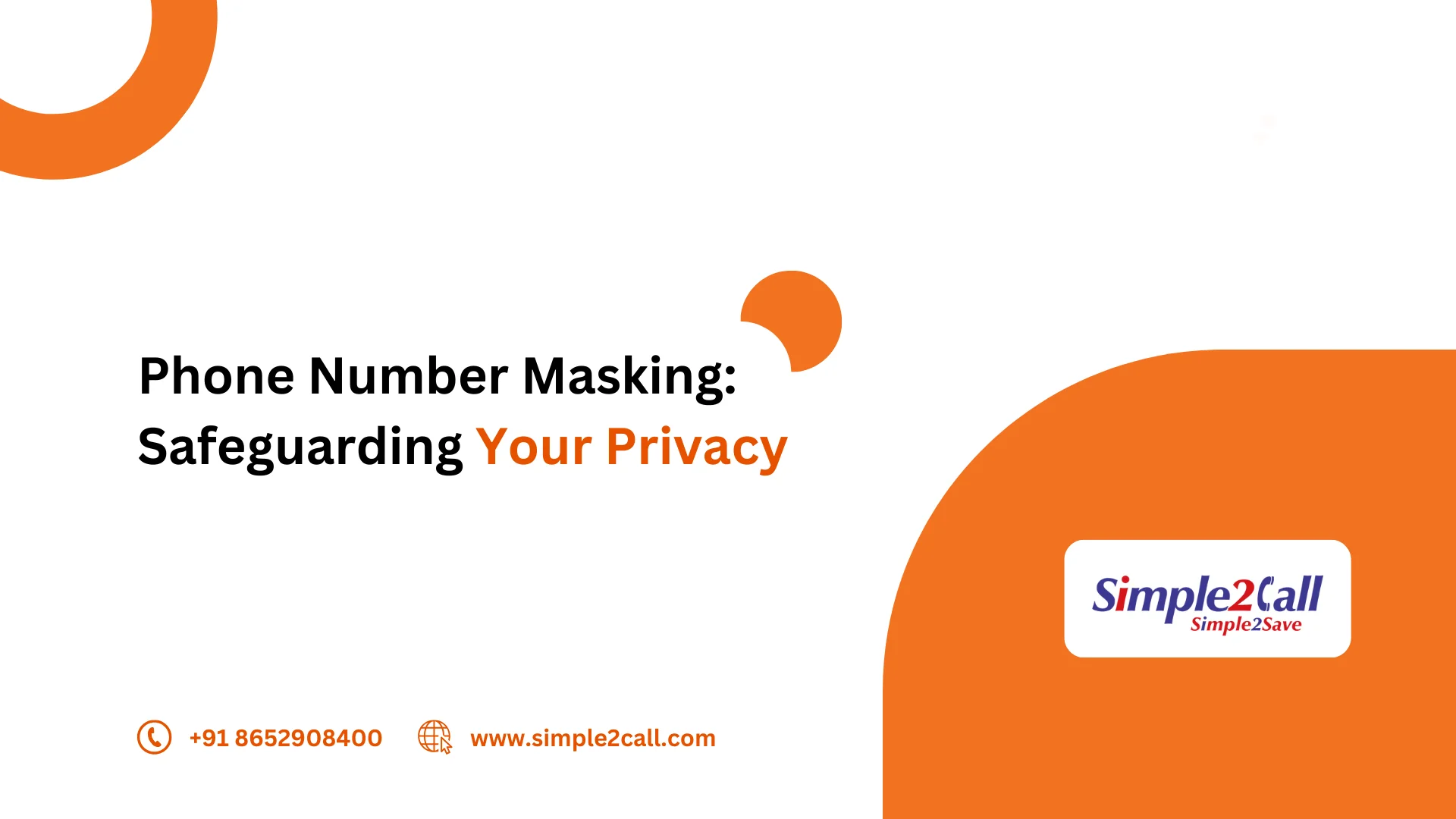
January 16, 2024 - 8 Min Read
Phone Number Masking: Safeguarding Your Privacy
Phone number or call masking is one of the most crucial telephony features. It's become popular because it helps protect your privacy, keep your phone calls safe, and make sure you're always on the same page. But what exactly is call masking? Why is it important? What are the benefits? What are the use cases? And why should you consider using a number masking solution in your business?
What is Call Masking?
Call masking is a phone feature that helps protect your privacy and security when talking to someone. It hides the actual phone numbers of you and the person you're calling. When you make a call, a fake number, called a masked number, pops up on the other person's phone.
What Are Masked Phone Numbers?
Masked phone numbers are sometimes called virtual numbers or temporary numbers. They're crucial for keeping your contact information safe and private while talking to someone. They act like a middleman between you and the person you're talking to.
Why is Call Masking Important?
Call masking is vital because it helps protect your customers' privacy, builds trust, and ensures you follow all legal and privacy laws. Customers can talk to you securely and quickly by masking your phone numbers without worrying about their privacy.
Benefits of Masking Phone Numbers
There are many reasons to use masked phone numbers, like keeping your phone safe, protecting your customers' privacy, making it easier to communicate, and managing your interactions. Call masking can help you streamline your communication while keeping your phone safe.
Enhanced Security
Call masking is a great way to keep your contact info safe and secure. It hides your phone number, so you don't have to worry about it being misused or your privacy being invaded.
Privacy Protection
Privacy is essential; call masking is a great way to protect it. It hides your phone number, so you don't have to worry about it being taken advantage of or accessed without permission.
Ease of Communication
Having a masked phone number makes it easier to communicate. They act like a middleman so people can get in touch with each other without having to give out their actual phone numbers. It makes talking to each other easier while keeping everyone's privacy safe.
Efficient Marketing Campaigns
Call masking is a great way to get the most out of your marketing efforts. It lets you send out masked numbers to track your campaign's performance without giving away your main contact info.
How is Call Masking Different from a Virtual Number?
They both provide privacy, but the main difference is how they work. A virtual number is like a one-way call, but it's used for communication. On the other hand, a masking number acts like an intermediary, connecting the person calling and the person receiving it but keeping their real numbers private.
Use Cases of Number Masking Solutions
There are many ways that number masking can be used, like for e-commerce transactions that need to be secure, for online marketplaces that need to be easy to communicate on, and for customer service centers that require privacy. These examples show how vital number masking is in today's digital world.
Secure E-commerce Transactions
Security is super important when it comes to e-commerce. With number masking, you can talk to sellers without giving out your phone number, which helps keep your transactions secure.
Facilitating Communications on Online Marketplaces
It's common on online marketplaces for buyers and sellers to communicate with each other, and masked phone numbers offer a safe way to do it, keeping both sides of the transaction private.
Ensuring Privacy in Customer Service Centers
Customer service centers deal with hundreds of thousands of calls every day. By using call masking, you can protect your customers' privacy and keep them safe while they talk to you, building trust between you and your customers.
Why Should Companies Use Number-Masking Solutions?
Call masking is an excellent way for businesses to improve their security, build customer confidence, meet regulatory requirements, and make their operations more efficient. There are lots of advantages to using call masking, and it's worth considering.
So, there you have it! Phone number masking is an essential part of modern communication. It protects your privacy, keeps you safe, and smoother your business. It's a must-have for companies in all kinds of industries. By adding call masking to your communication system, you can protect your privacy, build trust with your customers, and manage the ever-changing world of communication.